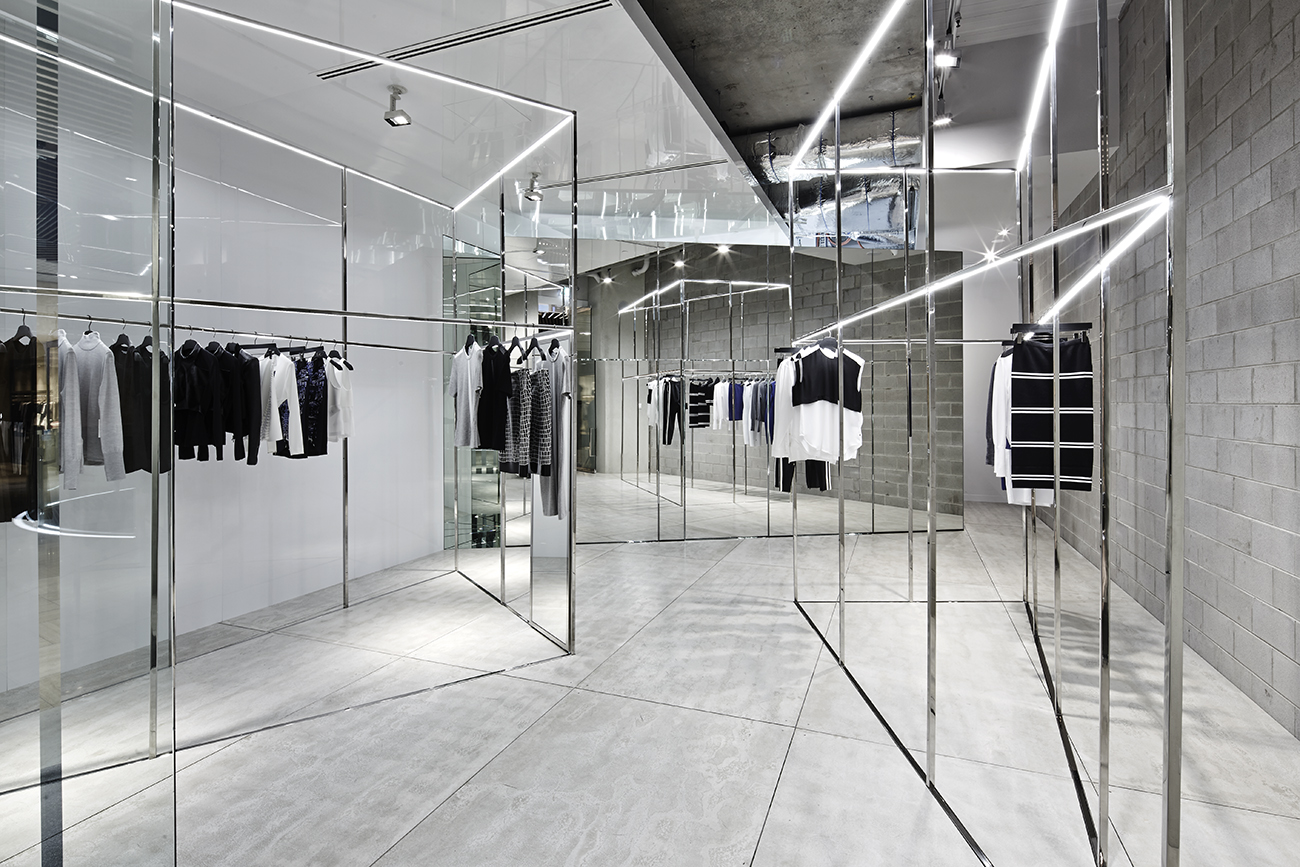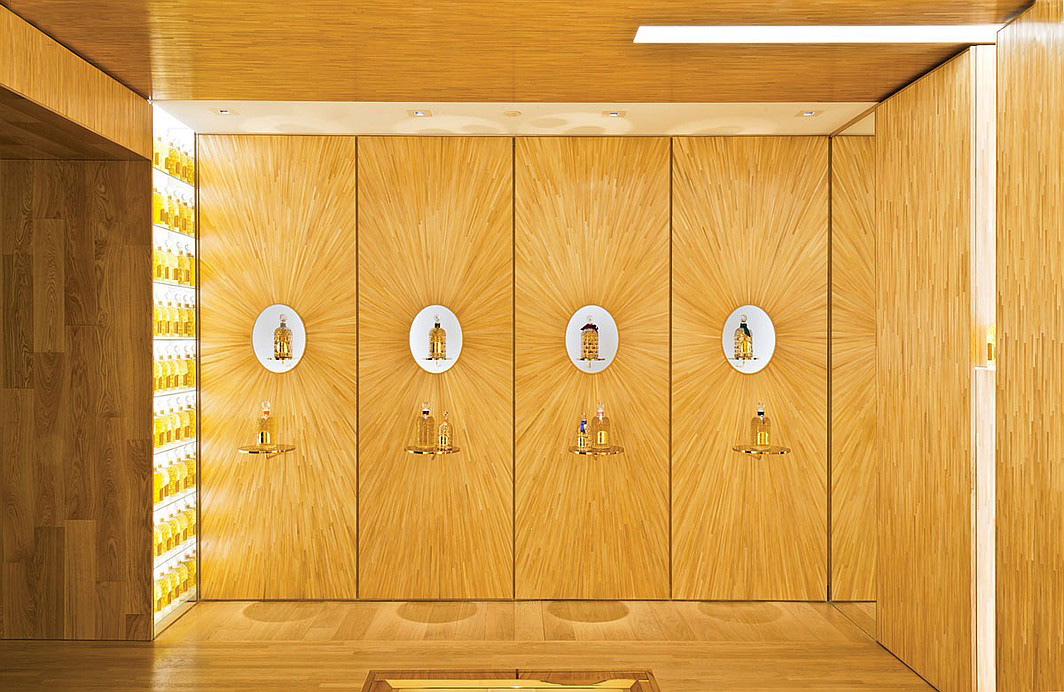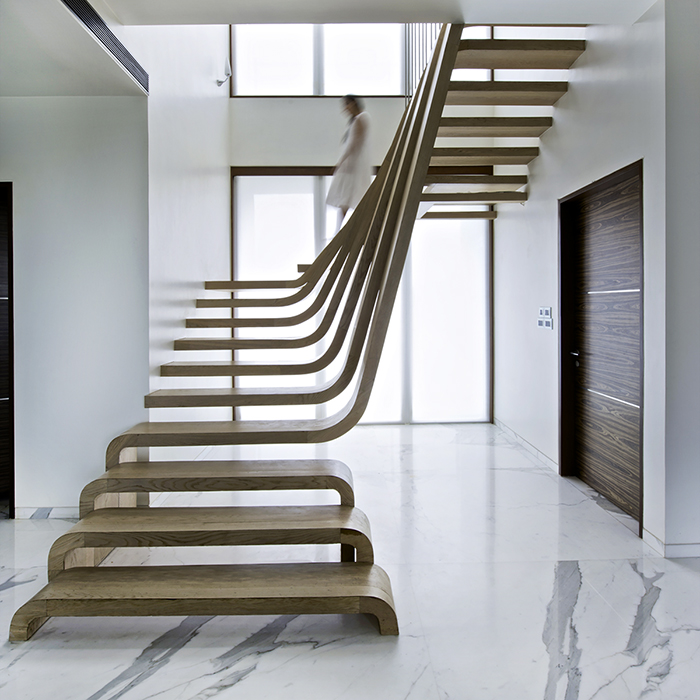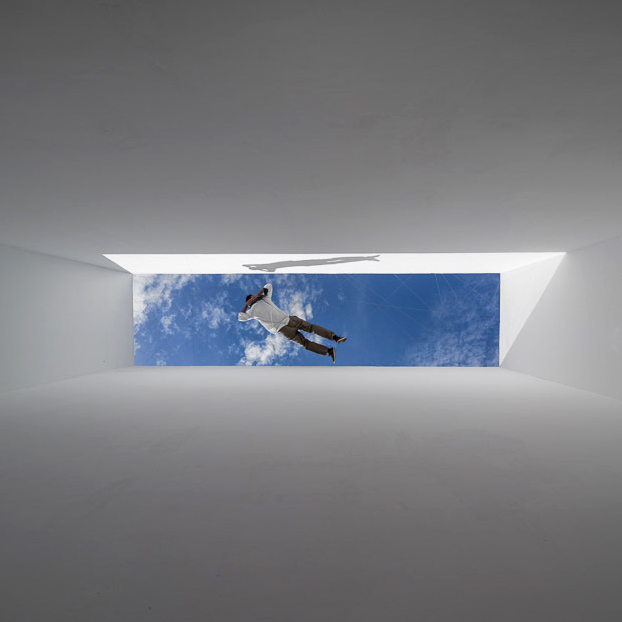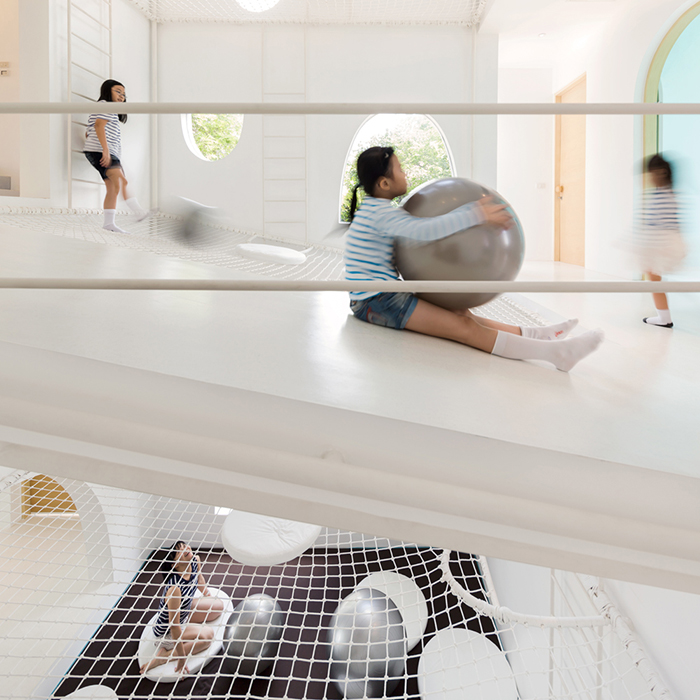Azerbaijan’s Shapely New Airport Terminal
/Snapshot: Istanbul based architectural firm Autoban adds 65,000 square meters of new terminal space to Heydar Aliyev International Airport in Azerbaijan that features enormous cocoon structures in various stages of completion alongside a sleek, comfortable, and restful design that bucks the norm of traditional airports.
Istanbul based architectural firm Autoban is a team of 35 led by Seyhan Ozdemir and Sefer Caglar that has accumulated a variety of awards for its progressive and experimental solutions to architectural challenges, the latest of which is Azerbaijan’s Heydar Aliyev International Airport, the busiest in the Caucasus. With a drive to create a larger space that will serve as a forward-thinking yet functionally conformative solution to the particular socio-economical demands on contemporary Azerbaijani society, Autoban discards the conventional sparseness of airports that seems to contribute, rather than alleviate, the high psychological and physical tension resulting from air travel.
Socio-economic changes have afforded the country the resources to emphasize a level of hospitality that is so vital to the modern industries of both business and tourism, and every inch of Autoban’s appendation of 65 thousand square meters to the Heydar Aliyev International Airport has been fashioned with this in mind. The non-conventional approach is readily apparent from the presence of materials like wood and natural stone that are not typically featured in commercial places like airports. Standard amenities like food and beverage locations are retained but are adorned with wood and/or positioned within the rays of natural light to convey a pallette of warmth and depth, a tone which is maintained through most surfaces, regardless of their exteriors, be they wood, paint, or fabric-covered.
No matter the reason for their visit--business or leisure--passengers fatigued by travel stress are faced with a new design approach that bucks the norm of air travel with its curiously standout and magnificent sandstone-colored “cocoon” structures. Some are intact, and take the spiraled shape of a Moskvan onion design, while others are “sliced” and the two halves laid next to each other. Still others are a mere skeletal structure that suggests the shape given full form in the complete ones. This interplay of suggestion and realization was in fact a cornerstone of Autoban’s design impetus, as they achieved innovation by articulating the physical, tangible elements of the design in a way that coexists with their intangible suggestions.
Laying bare the skeletal fabric of the cocoons allows for a governing aesthetic to the innovative new design. It showcases a hexagonal pattern that is preserved as it radiates outward, a la lights from a disco ball, onto the terminal ceiling arching above. This scene offers pleasures to air travelers departing the cabins of a plane in a way that the slew of cold functionalism dotted with Western advertisements, which typifies a great many modern airports, cannot. Capitalizing on this theme are the trees, for one, and the finally, the chairs, that are assembled around these elaborate structures, which fabricates a sort of microcosmic, artificial eco-space highly suggestive of both an Eastern allure and of the outdoors. This is sure to proffer an alleviating freshness to the wearied flier, creating a space that in its invitingly comfortable yet aesthetically innovative way, redefines the moniker “contemporary.”
Subtle hints of these basic, fleshed out design elements like the cocoons and the sandstone color scheme are kept intact in a suggestive, cohesive way elsewhere in the terminal. The cocoons, enormous as they are, nevertheless reside on the upper level mezzanine (reached via escalator), and Autoban has maintained a 6 metered height to accommodate their size, while filling out the greater height between the ground floor and the ceiling with pillars that branch out into tripods at the upper extremities to provide a perceptual spectacle as much as a structural support system. The outer diamond design of the cocoons is extrapolated to the moldings around the escalators and the lower railings. The trees that are placed so closely to the cocoons above are also interspersed throughout the ground floor while the marble checkered floor adheres the sandstone coloration and contributes to the cohesion of the entire design.
The terminal achieves the durability needed to sustain larger, heavier amounts of traffic while being permeated by an ease of comfort and an invitingly innovative approach to commercial architectural design, offering travelers immediate respite while welcoming them as the face of Azerbaijani hospitality. It sets Heydar Aliyev International on a higher technical scale and establishes a new standard for traditional airport design, being a flagship of contemporaneity--a term which, thanks to Autoban, adds a new scope of non-conventional aesthetics and progressiveness to conventional functionality and conformity.
Photography courtesy of Autoban
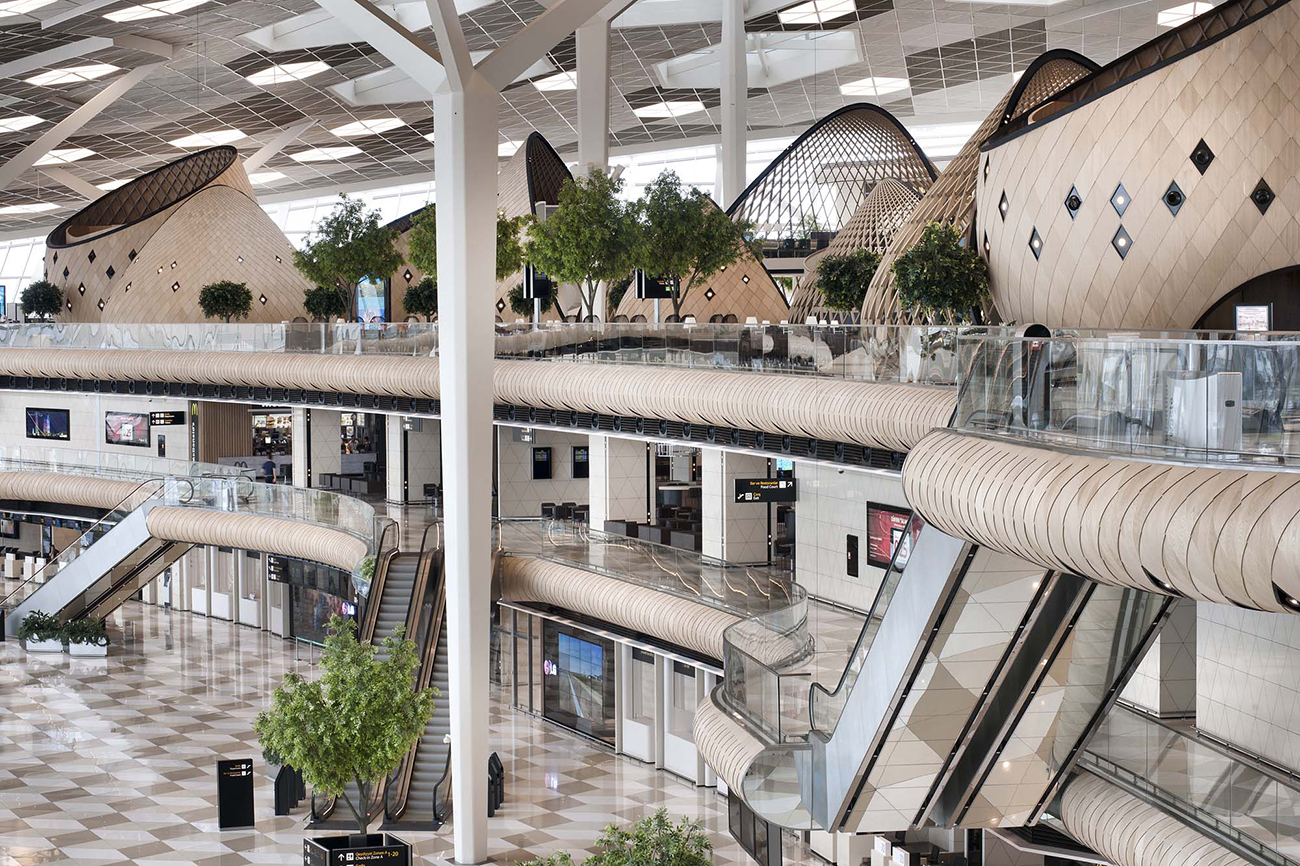
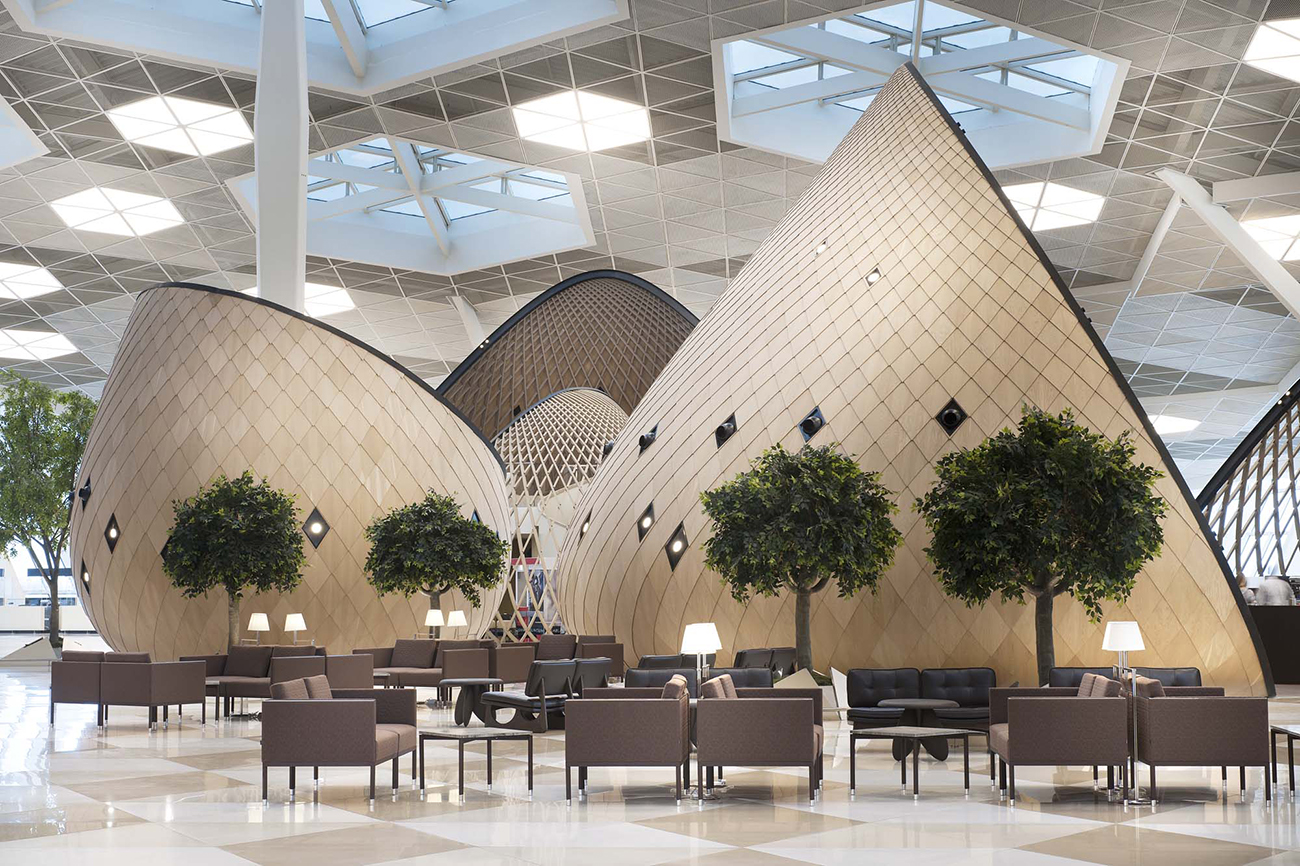
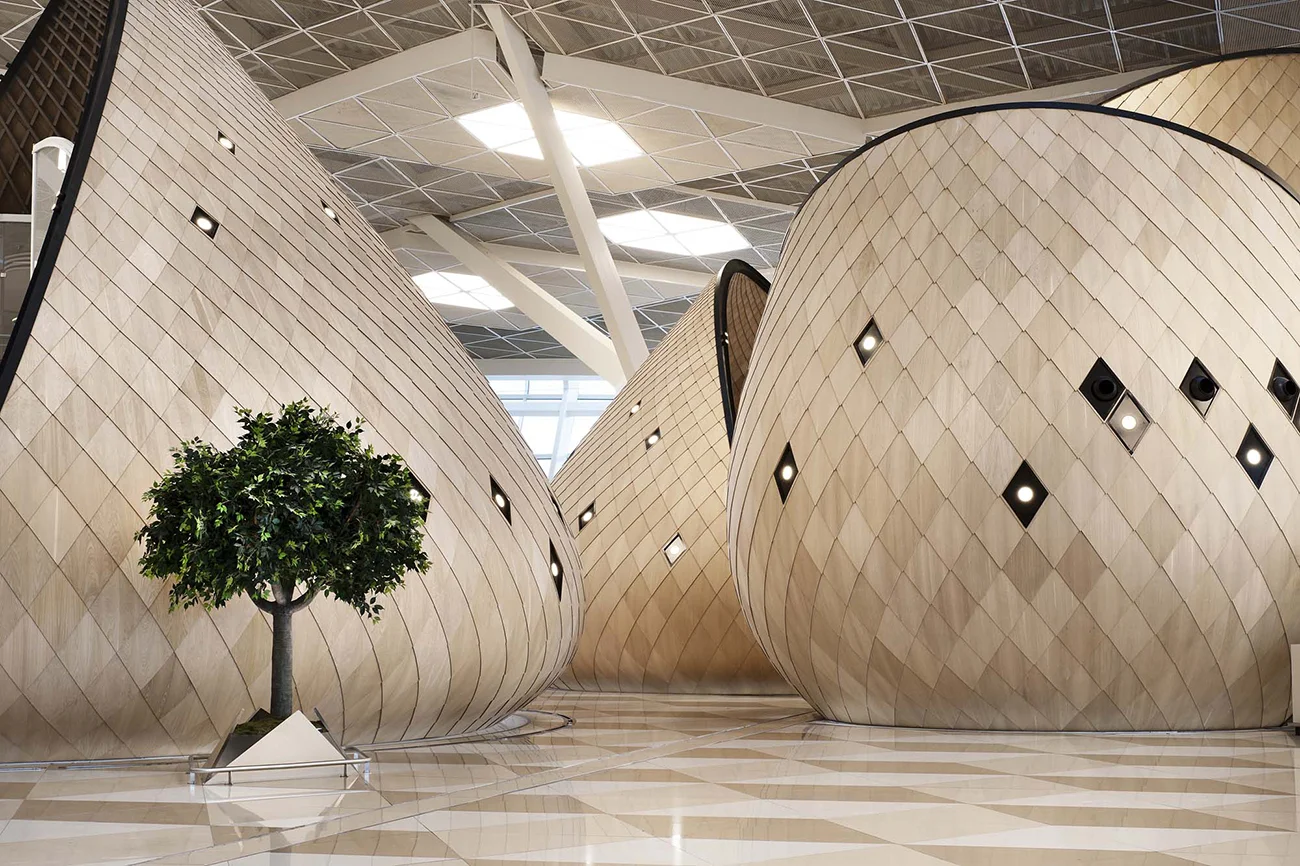
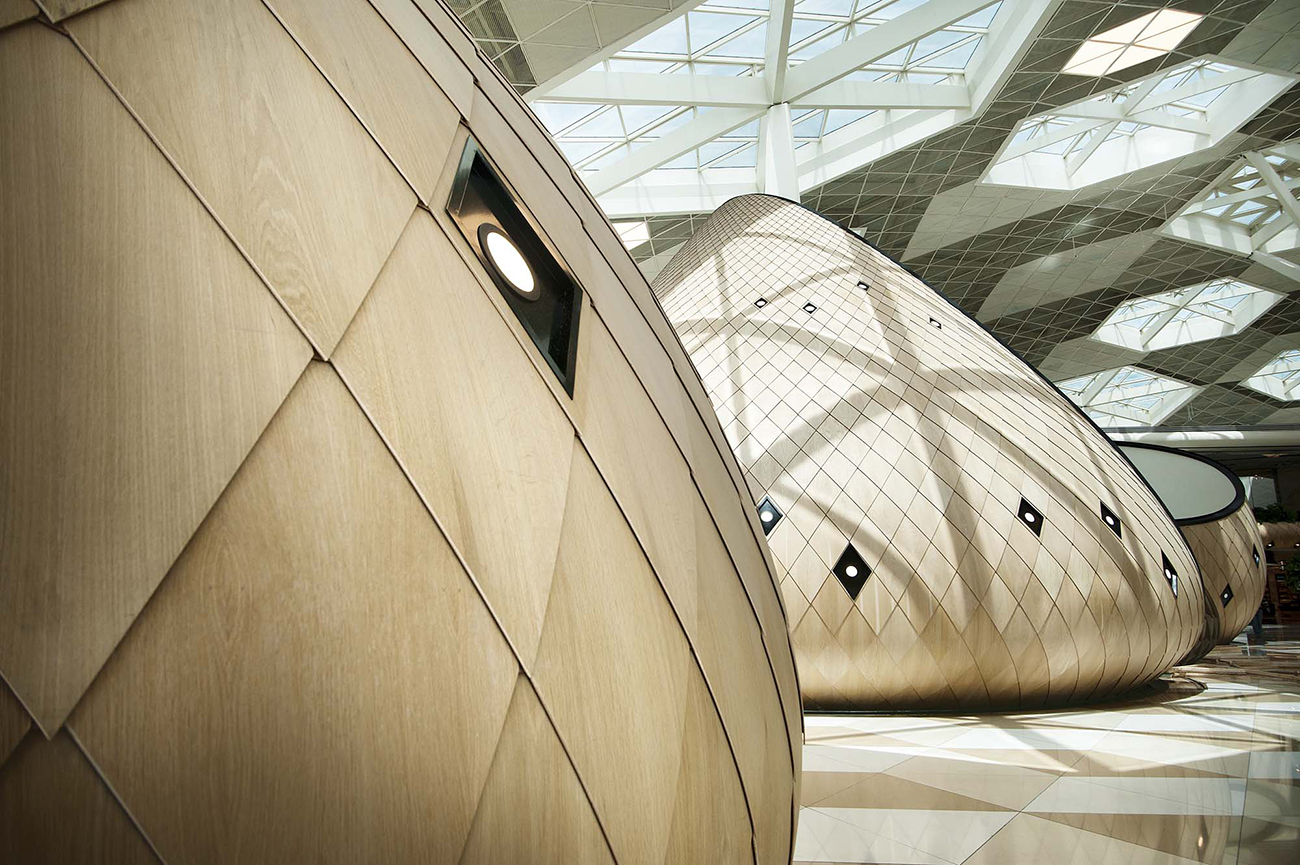
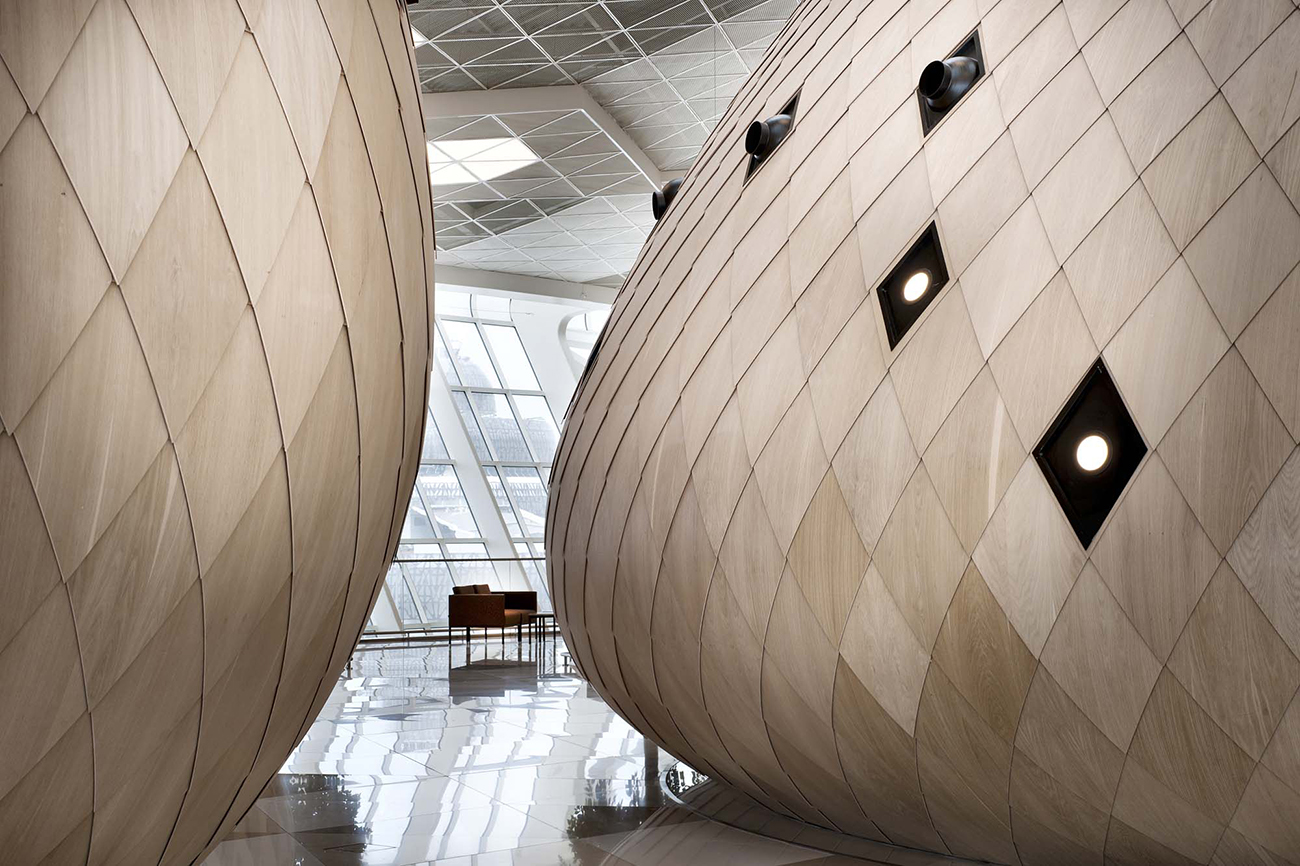
Other Related Stories:



